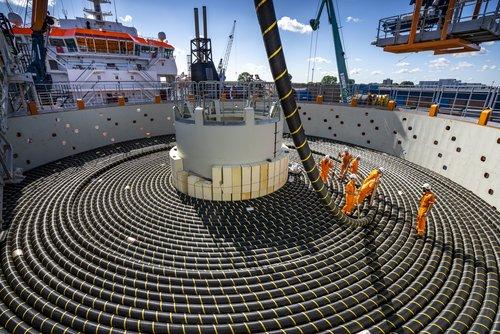Renewable energy – Tennet
With the opening of the tender for the 525kV DC cable manufacturing and installation for the Dutch offshore IJmuiden Ver projects, TenneT set another important step in our actions to accelerate reaching the 2050 climate goals.

This new type of cable is based on the 2 GW standard for offshore grid connections which is developed together with the market.
With the new 2 GW standard TenneT is able to accelerate offshore wind deployment. This development is a good example on how we deliver in scaling up in order to become climateneutral in 2050.
European countries have recently set new targets to meet climate objectives. The Dutch and German governments want to connect an additional 20 Gigawatt (GW) of offshore wind capacity on top of existing 2030 targets.
TenneT, responsible for the Dutch offshore grid and part of the German offshore grid, developed a new 2 GW standard to be able to accelerate offshore wind deployment. Together with market parties, the transmission system operator develops a new High Voltage Direct Current (HVDC) system to connect future wind farms to both offshore and onshore grids.
The new transmission standard supports the essential next step towards larger offshore wind farms and a North Sea wide European Hub-and-Spoke system – combining wind power connection, coupling of energy markets through interconnection and smart integration into the main onshore grids. As part of this development, the Dutch IJmuiden Ver projects will be hub ready to connect a future multi-purpose interconnector to the UK.
Marco Kuijpers Director Large Projects Offshore at TenneT: “The recently announced increased targets for offshore wind in the North Sea area by the German and Dutch governments underline the importance and necessity of the 2GW Program. The innovative cooperation between TenneT and the cable suppliers, joint in the ‘prequalification program’ will lead to a new global market standard. This standard is crucial to reach the worldwide climate ambitions and re-confirms TenneT’s position as the frontrunner in offshore grid development.”


